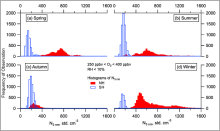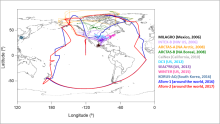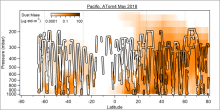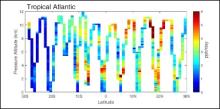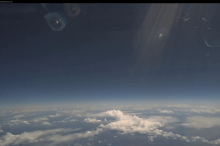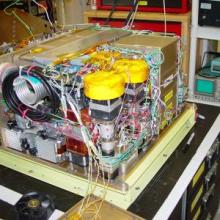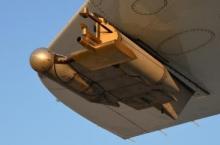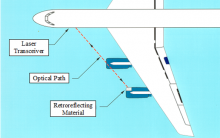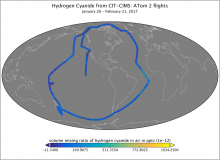ATom: Ultrafine Aerosol Characteristics and Formation, Lower Stratosphere, 2016-2018
Histograms of the total number of aerosols between 3 and 4500 nm in the LMS (ozone 250-400 ppbv, altitude > 8 km) for the SH and NH) for all ATom deployments (a-d), by season. Modified from fig. 2 of Williamson et al. (2021).

